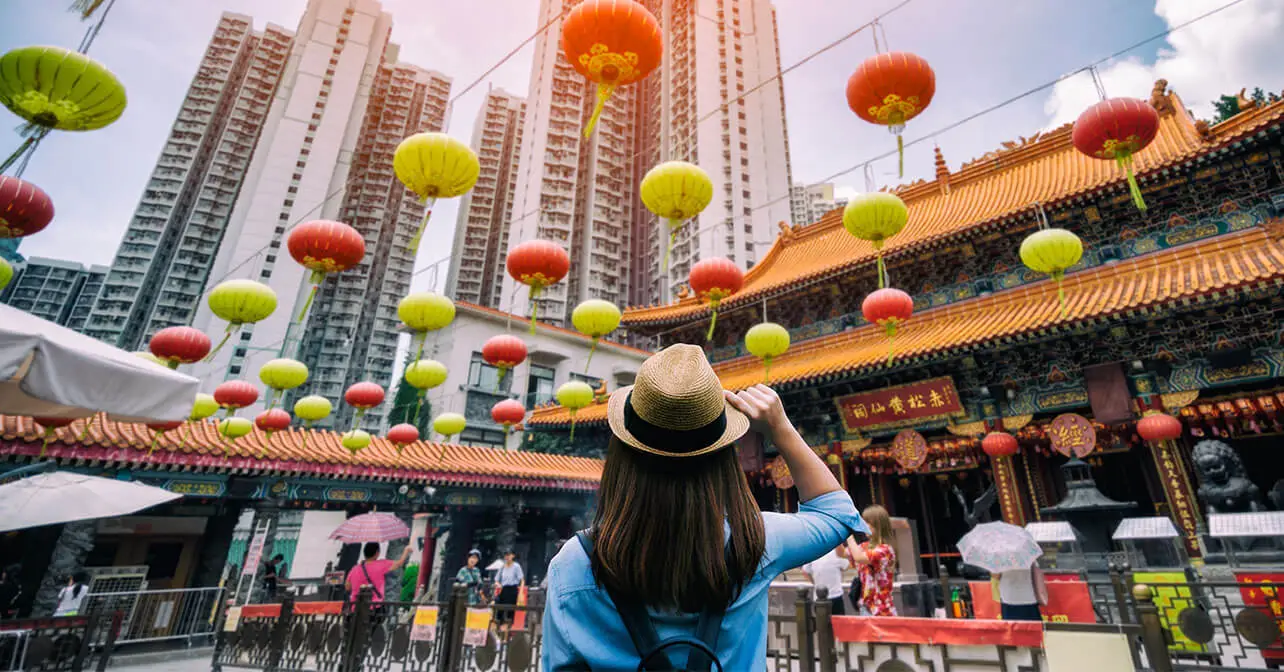Hong Kong’s government recently ended its last remaining Covid-19 restrictions, meaning the city is finally “back in business” after a difficult few years. Hong Kong’s Covid restrictions were some of the toughest in the entire world. Evidence of the strict measures for three long years can be seen in empty skyscrapers, board-up luxury storefronts, and quiet streets which were once known for their active nightlife and entertainment zones. The strict rules have caused upheavals including protests from residents and have also hurt the city’s reputation as the ‘financial hub of Asia’.
The rollback of restrictions has been gradual. In September, the government discontinued the previous 12-day compulsory hotel quarantine for visitors and replaced it with a ‘0+3’ policy, which meant three days of medical surveillance and limited movement in the city. On December 13th, the ‘0+3’ policy was also phased out. Now, international travelers can visit pubs or restaurants if they test negative on arrival. The mask mandate, however, remains in place.
The strict rules prevented many visitors, both tourists as well as those traveling for business from visiting the city. But with the city set to relax most rules, businesses in Hong Kong can finally look forward to an easier 2023. We looked at Azira’s data from September to mid-October to assess the immediate impact of the easing of restrictions in Hong Kong.
Here are some key takeaways from the research:
How to rethink your media mix
First off, what is a media mix? Advertisers are constantly trying to optimize their campaign strategies, as well as their budgets. A media mix means harnessing a combination of different advertising channels for an ad campaign. This means prioritizing different media based on the return of investment.
Because of the restrictions on the use of printed flyers and the ever-evolving nature of technology, retailers and distributors are gradually being forced to rethink their communication strategies. This is particularly true given that today people are online more than ever and the internet is such a pivotal part of consumers’ daily lives.
Hybrid communication
What is the best strategy? The solution is to customize a media mix, by using a hybrid communication strategy including digital flyers and digital advertising. This provides the best of both worlds.
- Digital flyers are cheaper and reduce waste (the perfect communication advantage for a CSR strategy).
- Digital advertising means you can target specific profiles using analytics tools which track performance, which in turn allows you to optimize costs.
For retailers that still prefer the flyer format, online alternatives are available which allow them to effectively share a digital flyer and replicate the printed flyer experience by featuring a wide range of products. Advertising agencies such as Azira can create a digital version of a paper flyer.
Some retailers already offer fully digital flyers on their websites. Many state in their corporate social responsibility roadmap that they are aiming to reduce the social and environmental impact of their activities. For some, e-commerce developments have meant that they can have a catalog that is 100% online.
Finding your media mix
There is no perfect media mix. As we already mentioned, the choice of media used in a communication strategy depends on several factors, each of which is specific to the brand. A media mix will be different for every brand, depending on consumer habits of the target audience, the advertiser’s budget, return on investment and other factors.
Individual retailers can develop a strategy to suit their specific needs and objectives, whether national or local. Depending on this, some brands will adopt a specific strategy using online and/or offline levers.
What are the advantages of online advertising over paper?
With technological developments and evolving consumer behavior, marketers are including more digital activities in their media strategy. This is particularly true following the “Oui Pub” program, where it makes sense to use digital tactics to respond to environmental and financial challenges.
Optimizing print format for online
Digital flyers have their benefits, both for consumers as well as advertisers. Extra functionalities can improve the catalog experience. For example, interactive features can be added to advertising materials.
Retailers can use video to help get the message across and clarify what they are offering. This will increase conversion rate in the long run. The same applies for using links. An online version of a flyer can also link directly to products and guide the customer towards a potential purchase.
For redirect links, we recommend integrating CTAs (Calls to Action) which send the user to a navigation app that directs them to the nearest point of sale. Buttons with CTAs such as “Let’s go” or “Get offer” can lead them to the store. This type of functionality strengthens consumer engagement and also increases conversion rates.
Finally, digital format allows retailers to include more products without using more paper. You can include a wide range of products, to demonstrate to customers the extent of your range and how you can respond to their potential needs.
Expanding your catchment area
The catchment area represents the perimeter from which the customers of a sales outlet would theoretically come. A catchment area would traditionally look at where consumers live, without taking into account where they, or people close to the area, travel (e.g., professionals commuting to work).
Direct mail, as we know it today, focuses on a fixed catchment area, focusing on where the potential customer lives. This concept is traditionally rooted in the distribution methods of a store manager, but can be complemented by analyzing online and offline behavior.
By combining online and offline data we are able to take into account more information to offer communication that is more personal to the consumer. Therefore, having geographical data (such as place of work or places they usually frequent), allows you to map consumer travel. This will shake up and reinvigorate your catchment area, which was previously focused only on where people lived.
The time and financial resources spent on mass mailing, based on a traditional catchment area, would be better spent on the customized communication processes described above. For example, consumers would receive personalized digital flyers, referring them to the nearest store through CTAs.
Digital flyers allow you to boost and broaden your catchment area. The physical time and cost spent on mail marketing are reduced with digital flyers and targeted to the right people based on their travel habits.
Tracking performance
With mailbox flyers you are unable to accurately measure performance. After sending a flyer, it is generally difficult for an advertiser to calculate their return on investment. How many customers really visited after receiving the flyer? Did they already plan to stop by before seeing the flyer?
You don’t know your real conversion rate. Online campaigns can be measured much more accurately, especially by monitoring the click-through rate. You can also use tracking UTMs in your flyer links, so you know the exact number of people that have clicked on your products.
If you want a more accurate idea of consumer response to your flyers, you can do A/B testing. Send two different versions of your visual to your contact list. See which gets most results and tweak your flyer as appropriate.
Digital flyers allow you to analyze performance, which in turn can help you develop a retargeting strategy. Knowing which profiles have already engaged with you allows you to target them with more personalized communication, optimizing the conversion rate for future campaigns.
Finally, you can track incrementality in your offline strategy. Also known as incremental measurement, this allows you to improve your media planning and optimize where you spend money. This strategy is very similar to offline A/B testing. It involves comparing the visit rate of group A who have seen one message, with group B who have not seen the message.
By having one group see the message and another not, you can calculate the potential increase in visits generated by the message you sent out. By comparing behavior of both groups, you have a better idea of how your campaigns are performing.
Post “Oui Pub” conclusions
The opt-in program is in line with current general attitudes and environmental awareness. It does not mean it is the death knell of printed flyers. As we have seen, hybrid marketing is a potential solution that can benefit retailers in a number of ways.
You can set up more repeat and profitable campaigns, while optimizing your ability to track performance in order to offer flyers that are tailored to your customers’ needs.
Guide : Transitioning to digital circularsA
1. Residents have had a 20% increase in movement since the lifting of restrictions
2. Shopping malls show the fastest recovery among all the categories analyzed
3. Younger audiences (under 35) are especially eager to return to normal
4. International visitors are yet to return, as the ‘0+3’ rule was in place until very recently, but are likely to show an increase soon
The data shows a definite uptick in the mobility of residents with the restrictions eased. With the holiday season almost here, businesses can expect residents to shop, dine out and resume normal activities like visiting theatres, etc. Residents may also look forward to travel, both domestic as well as international as they will no longer have to conform to long quarantine periods upon returning.
Where are visitors going?
The categories that have recorded a steady increase in visitors are shopping malls, cafes, bars, and tourist attractions. The example below shows that the number of visitors to Disneyland almost returned to 2019 levels. The graph uses 2019 numbers as a baseline for each of the months (illustrated by the pink line.)
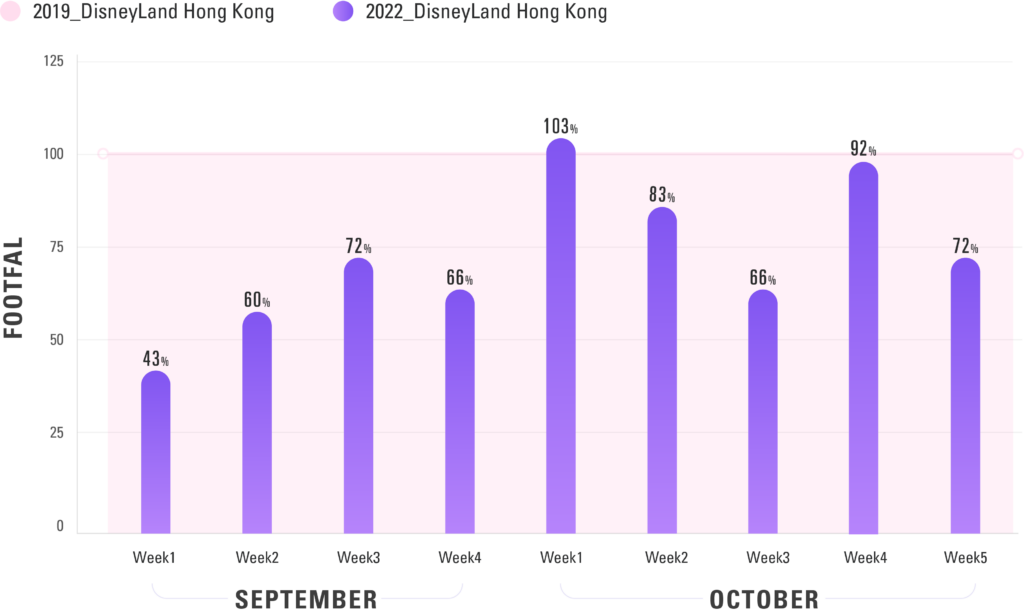
The graphs below show the human movement trends at shopping centers, bars, cafes and tourist attractions following the relaxation of rules. The numbers for week 1 of September were taking the baseline to measure week over week trend in footfall.
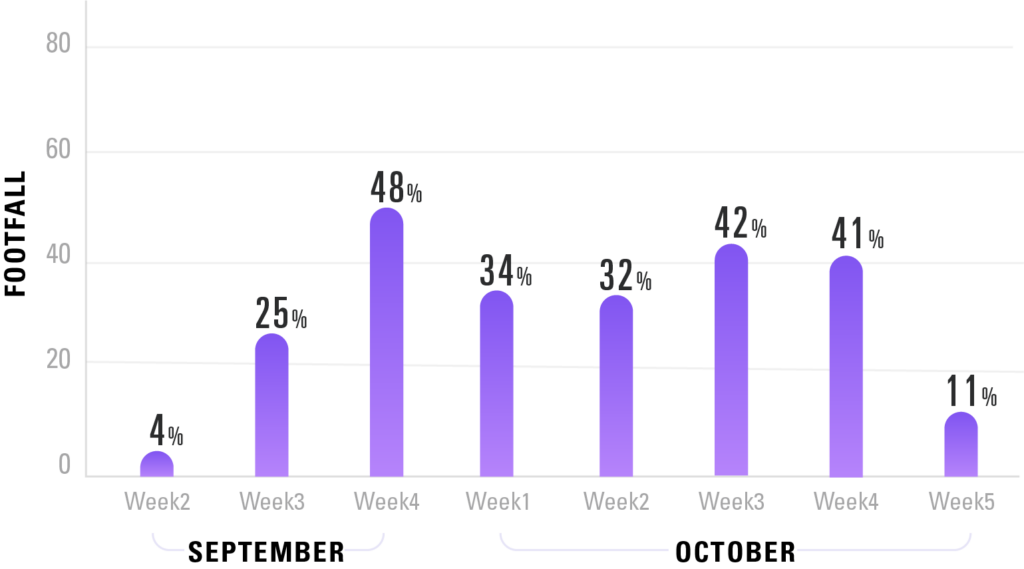
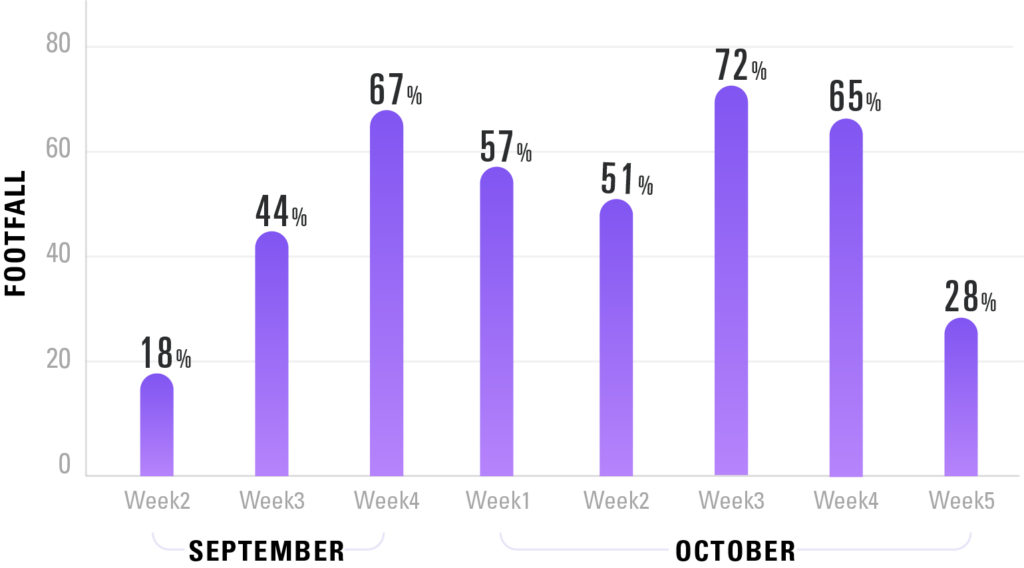

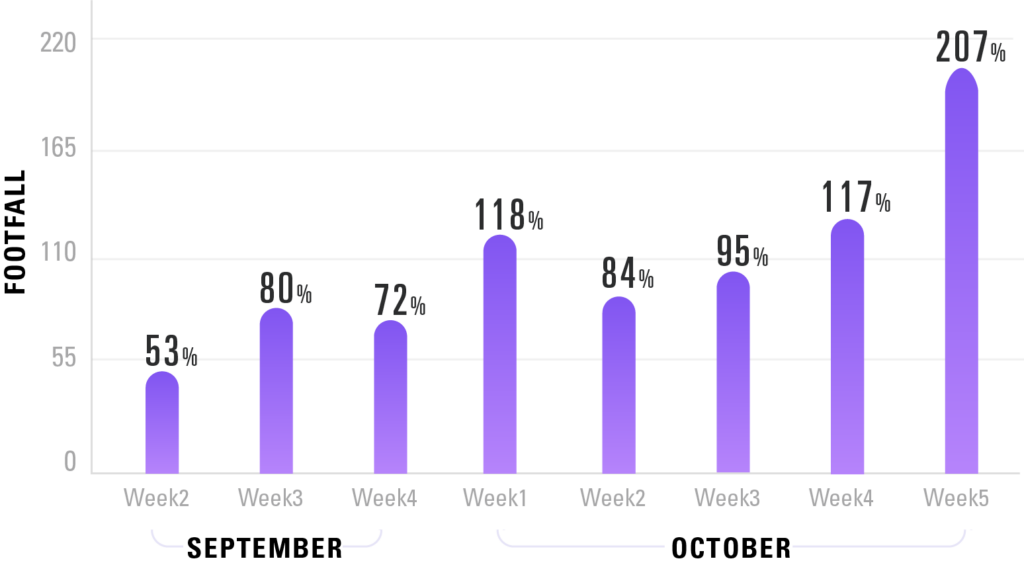
Shopping malls and bars recorded an almost immediate rise in visitors, while it steadily rose for cafes and tourist destinations.
What are the visitor demographics?
1. Shopping malls: Most visitors to shopping malls were from audiences 18-34. The IFC mall, which attracted more visitors from the 18-24 age group, is located in the International Financial Center, and could also include visitors to the 55-story Marriott Hotel located in the same building. As the holiday season continued, brands continued to see in-store shopping increase.


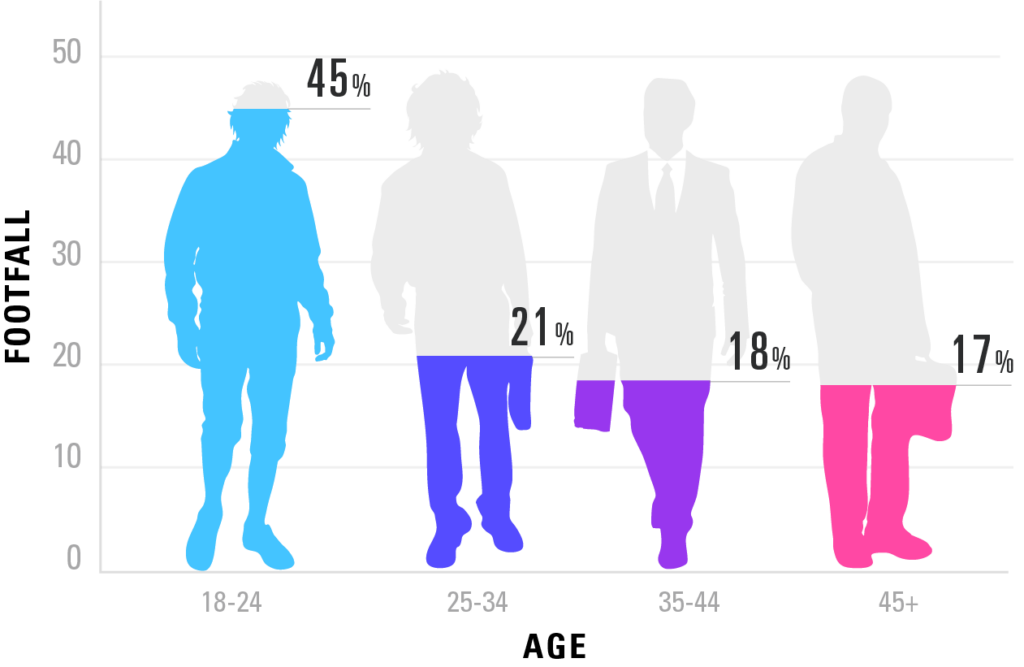
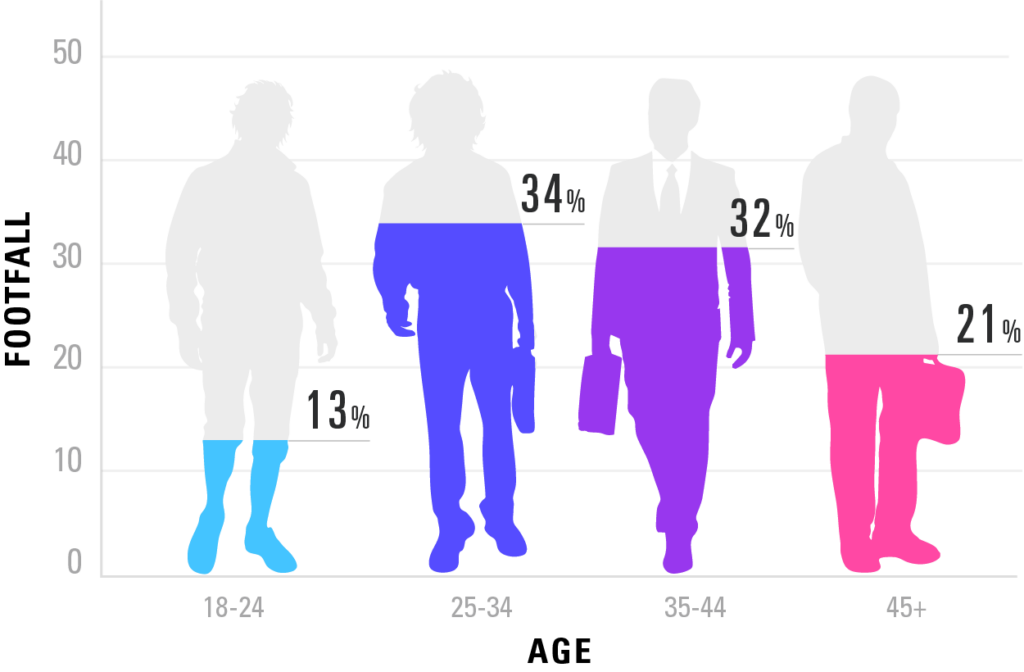
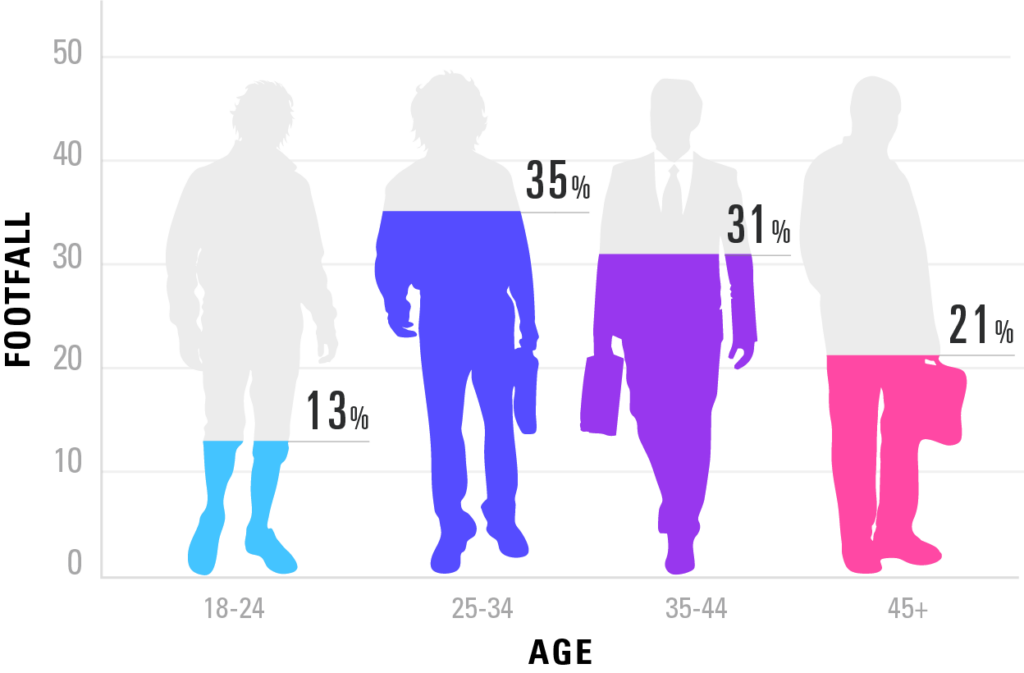

2. Tourist destinations: For most tourist destinations, parents with children formed the majority of the visitors followed by single or young travelers. Destinations that offered entertainment for families, such as Disneyland, attracted parents, whereas destinations such as the Hong Kong Observation Deck attracted visits from couples without children and solo travelers.
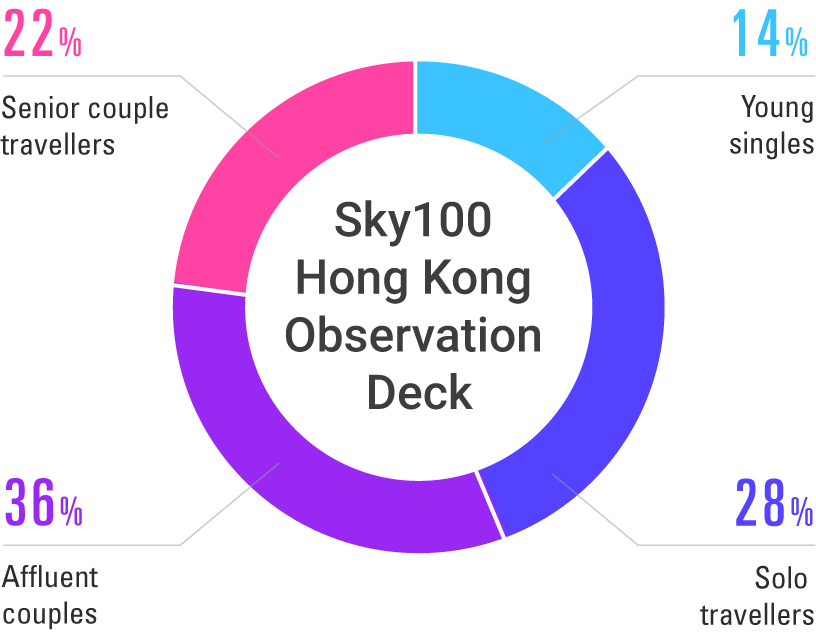
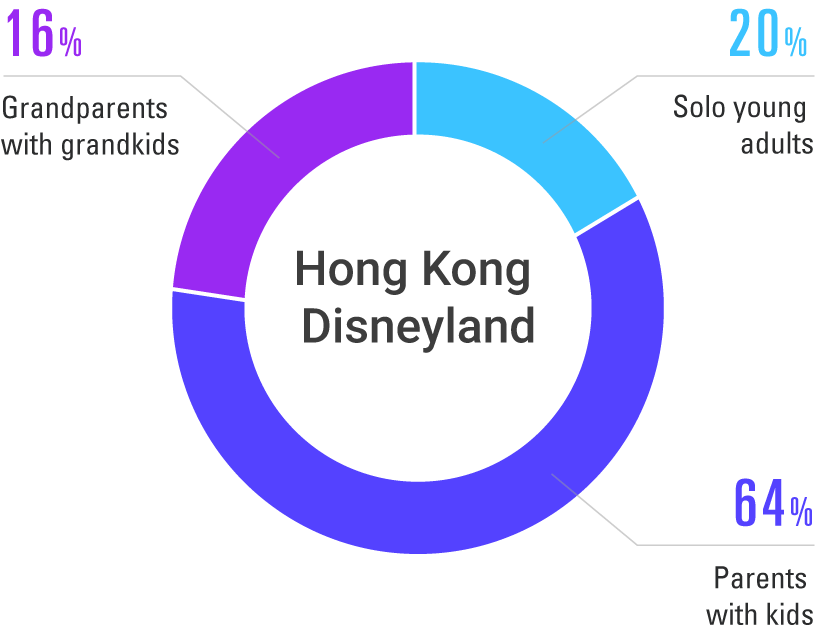
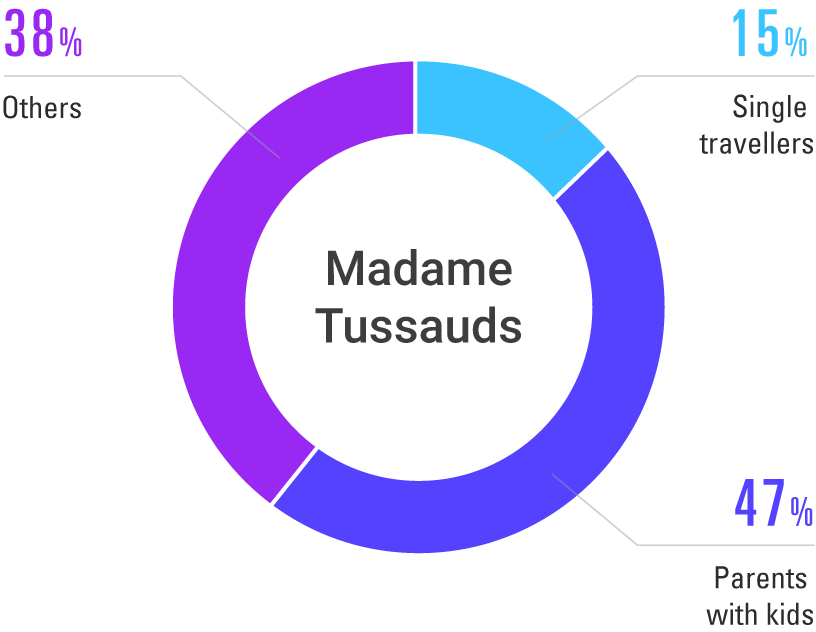
3. Bars and Cafes: Bars and cafes attracted younger demographics including young professionals, young couples as well as solo travelers. Data revealed that young and affluent female professionals were seen at cafes and bars frequently.
What is the Brand Affinity of these audiences?
Luxury Brands
Chanel, Armani, Gucci
Active Wear
Adidas, Fila, Nike, Reebok
Cafes
Starbucks, Pacific Coffee Company, Fuel Espresso
Sushi restaurants
Genki Sushi, Otacho Sushi, Sushi Takeout
5-star Restaturants
Grand Hyatt, Ritz-Carlton, Shangrila, Sheraton
In conclusion, the data does reveal a slow but steady return to normal. We expect the numbers to gain momentum in the coming year providing there are no changes to the lifting of restrictions. Authorities also expect Chinese mainlanders who left due to the strict restrictions to return soon and cause an uptick in local tourism

